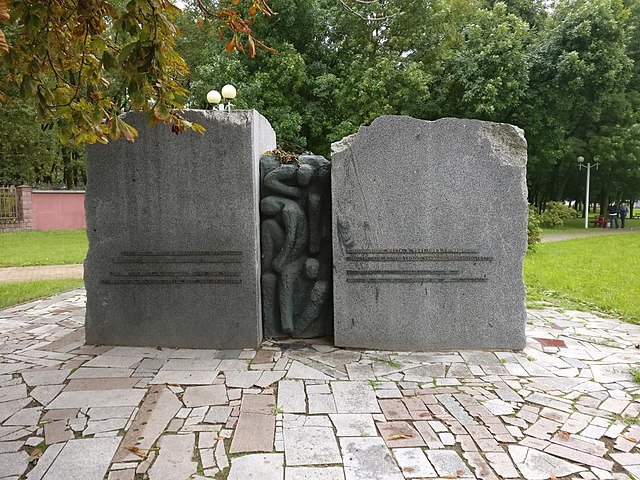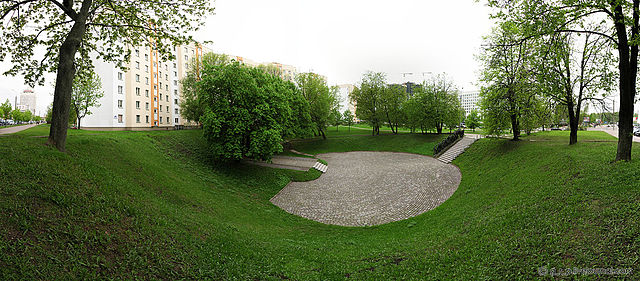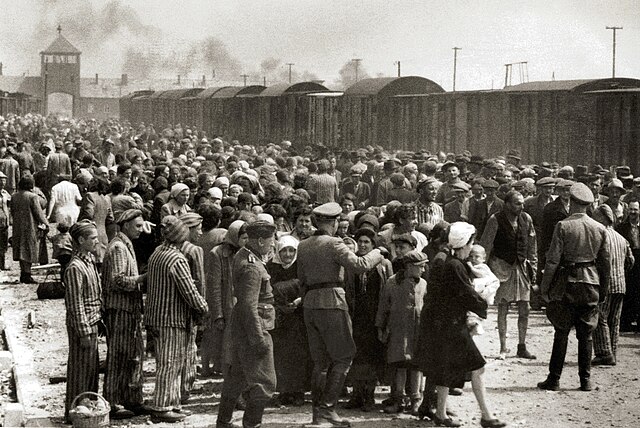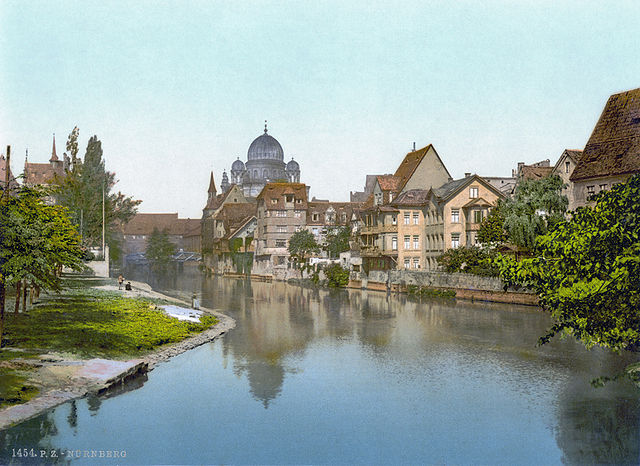The Minsk Ghetto was created soon after the German invasion of the Soviet Union. It was one of the largest in the Byelorussian SSR, and the largest in the German-occupied territory of the Soviet Union. It housed close to 120,000 Jews, most of whom were murdered in The Holocaust.
Jews in the Minsk Ghetto, 1941
The monument to victims of Minsk ghetto at Pritytskogo street, Minsk, Belarus
The "Pit memorial" with obelisk on the left (obscured) and group sculpture on the staircase on the right.
Mikhail Gebelev, Head of Resistance
The Holocaust was the genocide of European Jews during World War II. Between 1941 and 1945, Nazi Germany and its collaborators systematically murdered some six million Jews across German-occupied Europe, around two-thirds of Europe's Jewish population. The murders were carried out primarily through mass shootings and poison gas in extermination camps, chiefly Auschwitz-Birkenau, Treblinka, Belzec, Sobibor, and Chełmno in occupied Poland. Separate Nazi persecutions killed a similar or larger number of non-Jewish civilians and POWs; the term Holocaust is sometimes used to refer to the persecution of these other groups.
Jews arriving at Auschwitz II in German-occupied Poland, May 1944. Most were selected to go to the gas chambers.
View of the Pegnitz River (c. 1900) with the Grand Synagogue of Nuremberg, destroyed in 1938 during the November pogroms
1919 Austrian postcard showing a Jew stabbing a German Army soldier in the back
Territorial expansion of Germany from 1933 to 1941








